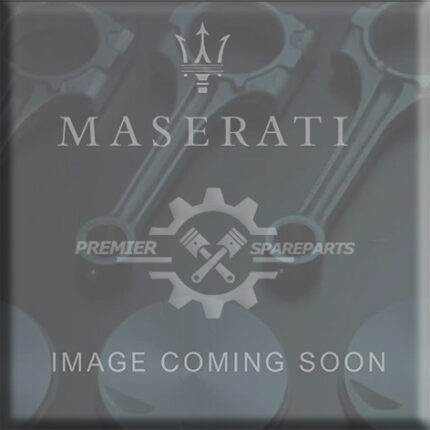Engine Oil Pan
SKU:
234976
$83.00
- Type: A large, cast or stamped metal reservoir located at the very bottom of the engine, designed to collect and hold the engine’s lubricating oil when the engine is not running.
- Function: The primary functions of the engine oil pan are critical for the proper operation and longevity of the engine:
- Oil Sump/Reservoir: Acts as the main reservoir for the engine oil, ensuring a constant supply of oil is available for the oil pump to circulate throughout the engine.
- Heat Dissipation: Helps to dissipate heat from the engine oil as it cools after circulating through the hot engine components, contributing to maintaining optimal oil temperature.
- Protection: Provides a protective cover for the crankshaft, connecting rods, and other lower engine internals from road debris and minor impacts.
- Oil Return: Collects oil draining back from various parts of the engine.
- Drain Plug: Contains a drain plug at its lowest point for convenient oil changes.
- Components: Typically includes the main pan body, internal baffling (to prevent oil slosh during aggressive driving), and a threaded opening for the drain plug. It may or may not include the drain plug itself, or the oil level sensor, depending on the specific kit or factory assembly.
- Location: Bolted directly to the bottom of the engine block, forming the lowest point of the engine.
- Material: Often constructed from cast aluminum for good heat dissipation and rigidity, or stamped steel for durability and cost-effectiveness. The choice of material depends on the engine’s design and performance requirements.
- Design: Precisely engineered to conform to the shape of the lower engine block and clear surrounding chassis components. Its internal baffling is crucial for maintaining oil supply to the oil pump, especially during high-performance driving where cornering forces can cause oil to slosh.
Oil BrakePan
$83.70- Type: A large, cast or stamped metal reservoir located at the very bottom of the engine, designed to collect and hold the engine’s lubricating oil when the engine is not running.
- Function: The primary functions of the engine oil pan are critical for the proper operation and longevity of the engine:
- Oil Sump/Reservoir: Acts as the main reservoir for the engine oil, ensuring a constant supply of oil is available for the oil pump to circulate throughout the engine.
- Heat Dissipation: Helps to dissipate heat from the engine oil as it cools after circulating through the hot engine components, contributing to maintaining optimal oil temperature.
- Protection: Provides a protective cover for the crankshaft, connecting rods, and other lower engine internals from road debris and minor impacts.
- Oil Return: Collects oil draining back from various parts of the engine.
- Drain Plug: Contains a drain plug at its lowest point for convenient oil changes.
- Components: Typically includes the main pan body, internal baffling (to prevent oil slosh during aggressive driving), and a threaded opening for the drain plug. It may or may not include the drain plug itself, or the oil level sensor, depending on the specific kit or factory assembly.
- Location: Bolted directly to the bottom of the engine block, forming the lowest point of the engine.
- Material: Often constructed from cast aluminum for good heat dissipation and rigidity, or stamped steel for durability and cost-effectiveness. The choice of material depends on the engine’s design and performance requirements.
- Design: Precisely engineered to conform to the shape of the lower engine block and clear surrounding chassis components. Its internal baffling is crucial for maintaining oil supply to the oil pump, especially during high-performance driving where cornering forces can cause oil to slosh.
Power Brake Booster Assembly
SKU:
209079
$1,000.00
- Type: A vacuum-assisted or hydraulic-assisted device that multiplies the force applied by the driver to the brake pedal, thereby reducing the effort required to engage the brakes. It is an integral part of the vehicle’s hydraulic braking system.
- Function: The primary functions of this power brake booster assembly are critical for vehicle safety and driver comfort:
- Brake Pedal Assist: Utilizes engine vacuum (or hydraulic pressure in some systems) to amplify the force exerted on the brake pedal, making it significantly easier for the driver to achieve effective braking.
- Braking Force Multiplication: Converts a relatively small amount of pedal force into a much larger force applied to the master cylinder, which then pressurizes the brake fluid to activate the calipers.
- Consistent Braking: Helps to provide a consistent and responsive brake pedal feel across various driving conditions.
- Components: Typically consists of a large, circular canister (often black) containing one or more diaphragms, check valves, and a pushrod that connects to the master cylinder. It will have a vacuum hose connection (for vacuum boosters) and mounting points to the firewall and the brake pedal linkage. The “assembly” often implies it comes ready for installation, possibly including minor seals or gaskets. It does not include the master cylinder itself, brake lines, or brake calipers.
- Location: Mounted on the firewall in the engine compartment, directly in front of the driver, between the brake pedal and the master cylinder.
- Material: Primarily constructed from steel, with durable rubber diaphragms and seals, engineered to withstand vacuum pressure (or hydraulic pressure), temperature fluctuations, and long-term use.
- Design: Precisely engineered to integrate with the specific brake pedal ratio and master cylinder of the Maserati GranCabrio, GranTurismo, and Quattroporte models, ensuring optimal braking feel, response, and performance for these high-performance vehicles.
Power Brake Booster Assembly
$1,000.00- Type: A vacuum-assisted or hydraulic-assisted device that multiplies the force applied by the driver to the brake pedal, thereby reducing the effort required to engage the brakes. It is an integral part of the vehicle’s hydraulic braking system.
- Function: The primary functions of this power brake booster assembly are critical for vehicle safety and driver comfort:
- Brake Pedal Assist: Utilizes engine vacuum (or hydraulic pressure in some systems) to amplify the force exerted on the brake pedal, making it significantly easier for the driver to achieve effective braking.
- Braking Force Multiplication: Converts a relatively small amount of pedal force into a much larger force applied to the master cylinder, which then pressurizes the brake fluid to activate the calipers.
- Consistent Braking: Helps to provide a consistent and responsive brake pedal feel across various driving conditions.
- Components: Typically consists of a large, circular canister (often black) containing one or more diaphragms, check valves, and a pushrod that connects to the master cylinder. It will have a vacuum hose connection (for vacuum boosters) and mounting points to the firewall and the brake pedal linkage. The “assembly” often implies it comes ready for installation, possibly including minor seals or gaskets. It does not include the master cylinder itself, brake lines, or brake calipers.
- Location: Mounted on the firewall in the engine compartment, directly in front of the driver, between the brake pedal and the master cylinder.
- Material: Primarily constructed from steel, with durable rubber diaphragms and seals, engineered to withstand vacuum pressure (or hydraulic pressure), temperature fluctuations, and long-term use.
- Design: Precisely engineered to integrate with the specific brake pedal ratio and master cylinder of the Maserati GranCabrio, GranTurismo, and Quattroporte models, ensuring optimal braking feel, response, and performance for these high-performance vehicles.
Vacuum Pipe
SKU:
293279
$189.00
- Type: A dedicated hose or rigid pipe designed to carry vacuum pressure (a pressure lower than atmospheric pressure) generated by the engine’s intake manifold to various vacuum-actuated components or sensors within the vehicle’s systems. Given it’s a specific part number, it’s a pre-formed, application-specific pipe with precise routing and connectors.
- Function: The primary function of a vacuum pipe is to transmit vacuum signals or pneumatic pressure for the operation of several critical vehicle systems, including but not limited to:
- Brake Booster: Provides vacuum assistance to the power brake booster, significantly reducing the effort required to apply the brakes.
- Emissions Control Systems: Connects to components like the PCV (Positive Crankcase Ventilation) valve, EGR (Exhaust Gas Recirculation) valve, or EVAP (Evaporative Emission Control) system for proper operation and emission reduction.
- Engine Management: Supplies vacuum to various sensors or actuators that control engine idle speed, fuel pressure regulation, variable intake manifold runners, and other engine performance parameters.
- HVAC (Heating, Ventilation, and Air Conditioning): In some systems, vacuum lines control the blend doors and vent actuators for cabin climate control.
- Components: Typically consists of a pre-formed hose made of durable rubber, synthetic polymers, or a rigid plastic tube, often with integrated connectors, check valves, or protective sheathing. The specific configuration of part number 293279 would be unique to its intended location and function within these Maserati models.
- Location: Can be found throughout the engine bay, connecting the intake manifold to the various vacuum-actuated components mentioned above. Its exact routing is specific to its purpose.
- Material: Made from high-quality, heat-resistant, and chemically stable materials such as reinforced rubber (EPDM, silicone), nylon, or polypropylene, engineered to withstand engine bay temperatures, vibrations, and constant vacuum pressure without collapsing or leaking.
- Design: Precisely molded or shaped to fit specific routing paths within the crowded engine bay, ensuring secure connections, preventing kinking, and resisting abrasion.

